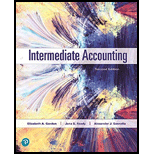
To explain: The meaning of stockholder’ equity.
Answer to Problem 15.1Q
Stockholders’ equity refers to the amount of share of the stockholders in the company’s assets. It refers to the aggregate amount after the distinction between the assets and liabilities of a company.
Explanation of Solution
Stockholders’ Equity:
Stockholders’ equity or also referred to as the shareholders’ equity in a company is the total share of a shareholder in the company’s assets after all the liabilities of the company are paid off. A stockholder owns the retained
Retained earnings : It refers to the amount of profit which is shared among the stockholders’ of the company from the total profit earned in a given accounting year.- Capital accounted: The total amount of capital a shareholder accounts in the company or has given as investment in the company refers to the capital accounted for by the shareholder.
- Accumulated income: Another source of income (or loss) for the shareholder can be from the revaluation done of different assets and liabilities in the company that results to build accumulated or comprehensive capital in the company.
Therefore, the stockholders’ are in a way the owner in the company up to the amount of capital invested.
Want to see more full solutions like this?
Chapter 15 Solutions
Intermediate Accounting Plus Mylab Accounting With Pearson Etext -- Access Card Package (2nd Edition)
- Elmont Industries issues $2,400,000 of 8% bonds at 101. What is the amount of cash Elmont would receive from the sale? A. $2,373,000 B. $2,240,000 C.$2,424,000 D. $2,185,000 E. None of the above. Help mearrow_forwardPlease explain how to solve this financial accounting question with valid financial principles.arrow_forwardCan you help me solve this general accounting problem with the correct methodology?arrow_forward
- I am looking for a step-by-step explanation of this financial accounting problem with correct standards.arrow_forwardTyson manufacturing company produces and sells 120,000 units of a single product. Variable costs total $340,000 and fixed costs total $480,000. If each unit is sold for $12, what markup percentage is the company using?arrow_forwardI am searching for the correct answer to this general accounting problem with proper accounting rules.arrow_forward
- Need helparrow_forwardI am looking for the correct answer to this general accounting problem using valid accounting standards.arrow_forwardA company paid $36,000 for a 3-year insurance policy on January 1, 2024. The payment was recorded as a prepaid expense. What is the adjusting entry required on December 31, 2024?arrow_forward
 Intermediate Accounting: Reporting And AnalysisAccountingISBN:9781337788281Author:James M. Wahlen, Jefferson P. Jones, Donald PagachPublisher:Cengage LearningCentury 21 Accounting Multicolumn JournalAccountingISBN:9781337679503Author:GilbertsonPublisher:Cengage
Intermediate Accounting: Reporting And AnalysisAccountingISBN:9781337788281Author:James M. Wahlen, Jefferson P. Jones, Donald PagachPublisher:Cengage LearningCentury 21 Accounting Multicolumn JournalAccountingISBN:9781337679503Author:GilbertsonPublisher:Cengage Managerial AccountingAccountingISBN:9781337912020Author:Carl Warren, Ph.d. Cma William B. TaylerPublisher:South-Western College Pub
Managerial AccountingAccountingISBN:9781337912020Author:Carl Warren, Ph.d. Cma William B. TaylerPublisher:South-Western College Pub College Accounting, Chapters 1-27AccountingISBN:9781337794756Author:HEINTZ, James A.Publisher:Cengage Learning,
College Accounting, Chapters 1-27AccountingISBN:9781337794756Author:HEINTZ, James A.Publisher:Cengage Learning,





